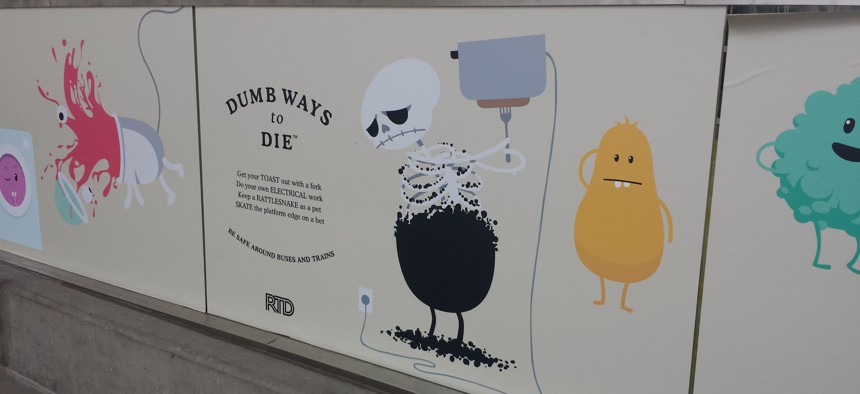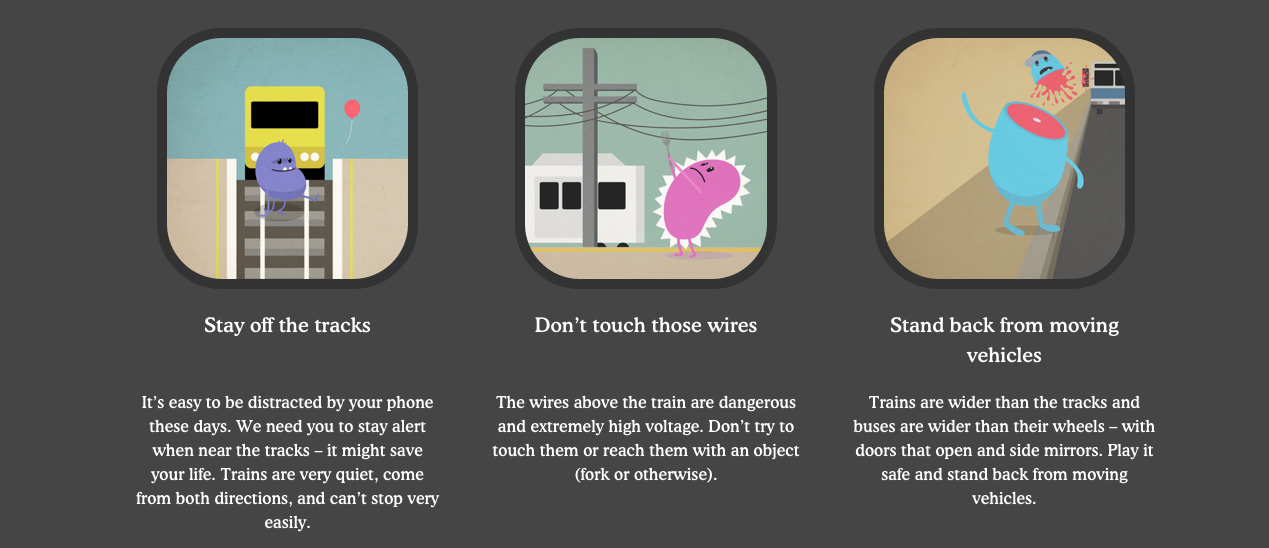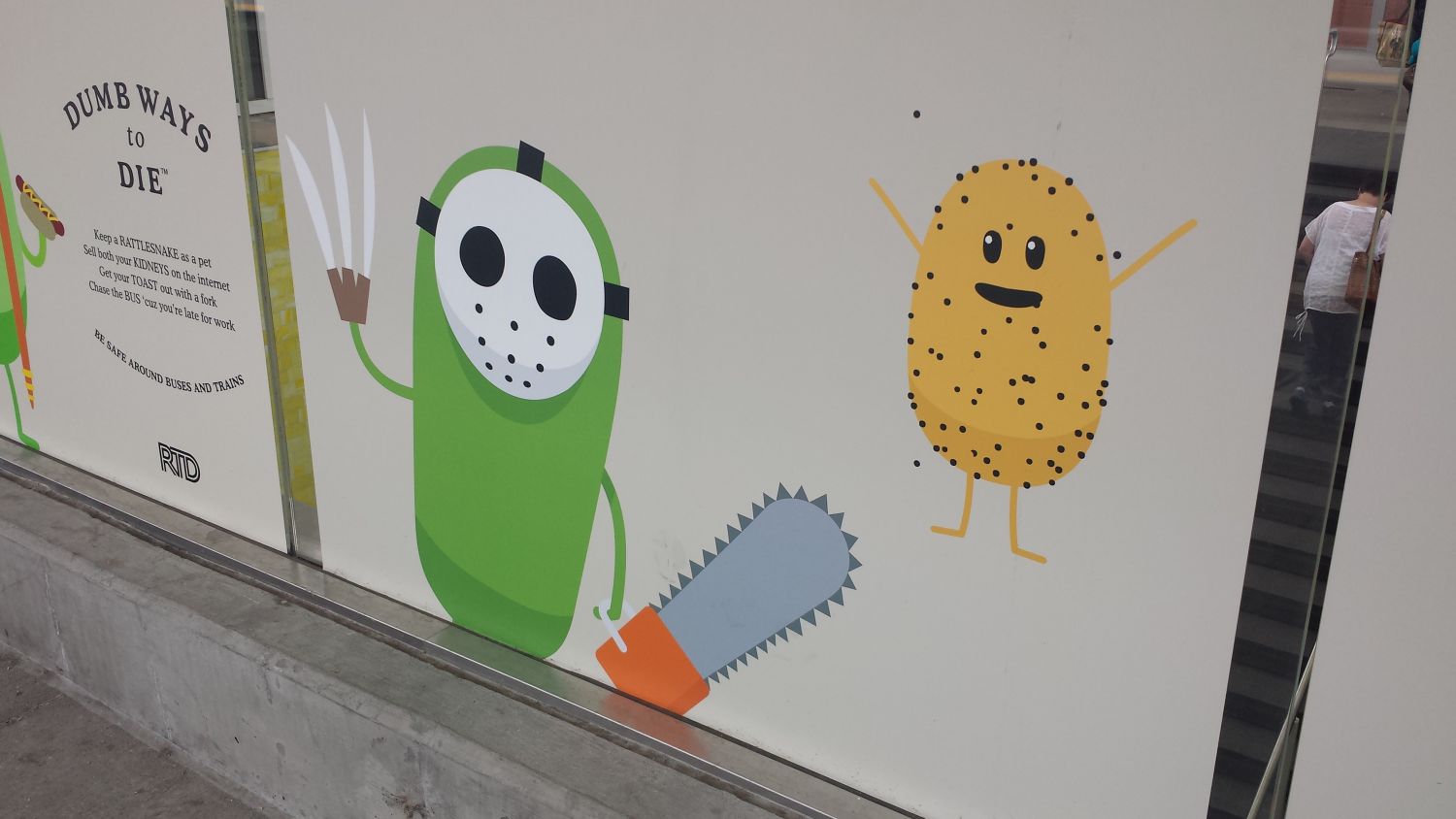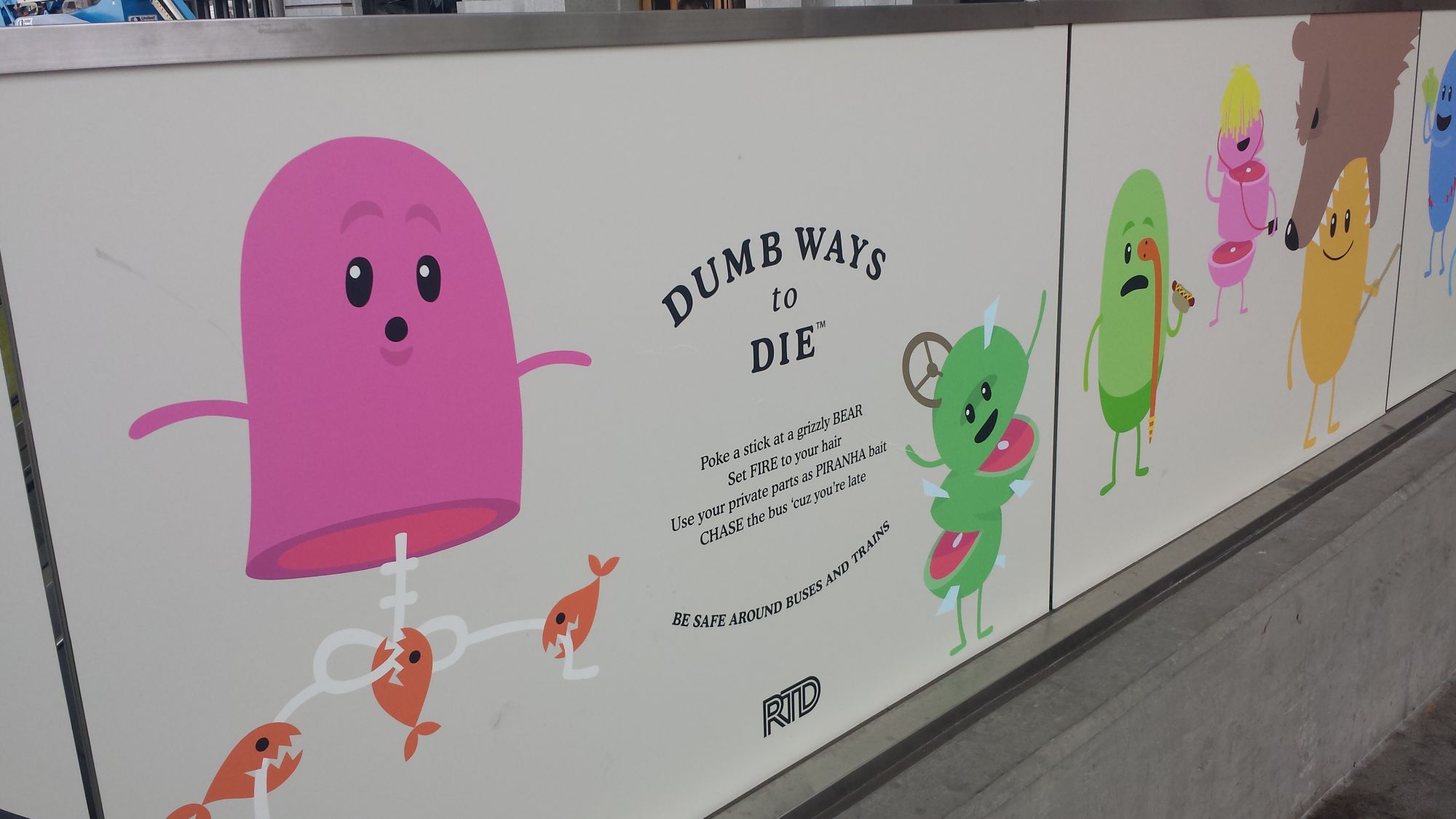There Are Plenty of ‘Dumb Ways to Die’ in Denver

Michael Grass / RouteFifty.com

Connecting state and local government leaders
The Mile High City’s regional transit agency has imported a popular Australian cartoon public safety campaign.
DENVER — The corner of 17th and Stout streets sits just north of a Regional Transit District light-rail station, so during rush hour, it’s not surprising to see downtown office workers dash across the street to catch a southbound train, even if it means crossing on a Don’t Walk signal.
Since light-rail vehicles travel through downtown Denver on surface streets, pedestrians have to step over the tracks embedded in the pavement, a potential tripping hazard if you’re not careful or distracted.
Denver’s pedestrians, naturally, need to also avoid physical contact with RTD’s massive light-rail vehicles and buses, too.
It may seem nonsensical to remind commuters that it’s inadvisable to get hit by a transit vehicle or get hurt around transportation infrastructure.
Still, transit safety tips are important to communicate and reinforce, especially as RTD opens up new rail lines this year .
The transit agency imported an Australian public safety campaign called “ Dumb Ways to Die ,” which uses cartoon characters to demonstrate various stupid behaviors that could lead to death—e.g., swallowing super glue and using “your private parts as piranha bait”—using mostly fun-looking characters as doomed victims.
More seriously, the bad behavior also includes activities like walking on rail tracks, failing to step away from the street or platform edge when a train or bus is approaching and touching the high-voltage overhead wires used to power light rail and commuter trains.
Those are all, simply, dumb ways to die.

The campaign is on full display at Denver’s expanded Union Station, especially in the escalator portal connecting the rail platforms and underground bus concourse. It’s a highly visible safety reminder in an area where there are a lot of dumb ways to die, including running down an escalator to catch a bus.


Michael Grass is Executive Editor of Government Executive’s Route Fifty.

NEXT STORY: Report Looks at Ways to Close San Francisco's Digital Divide





